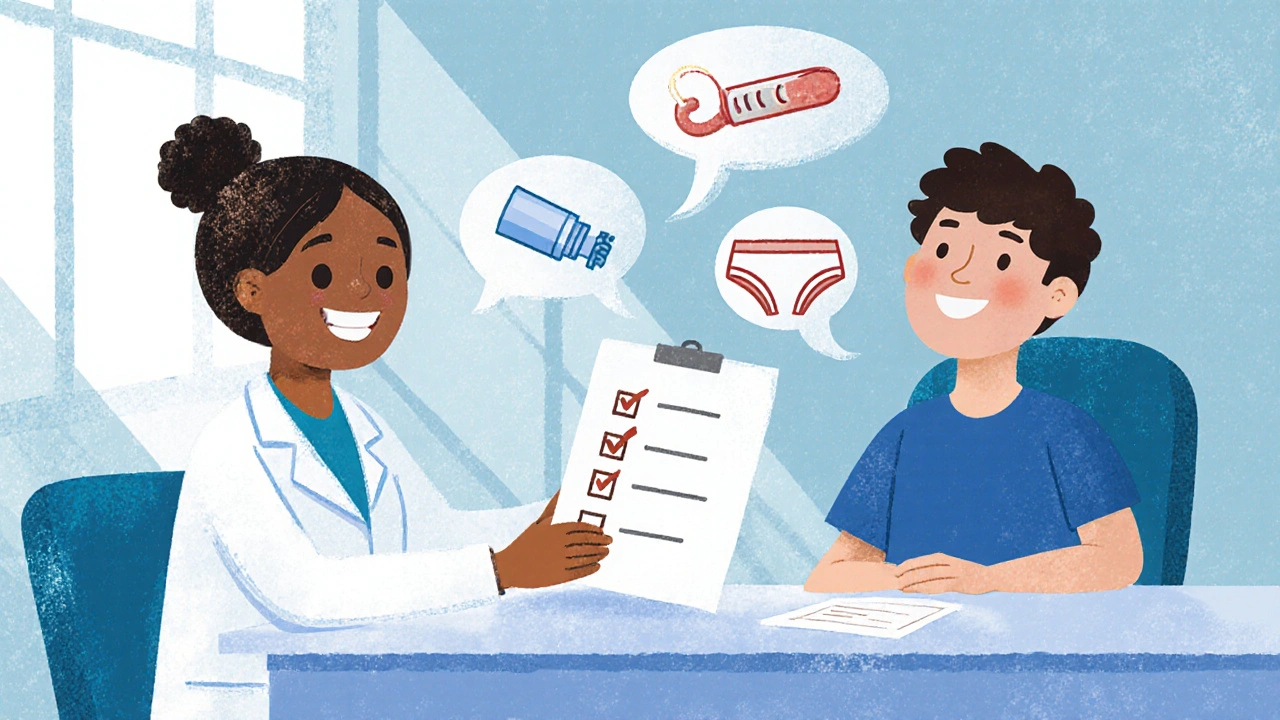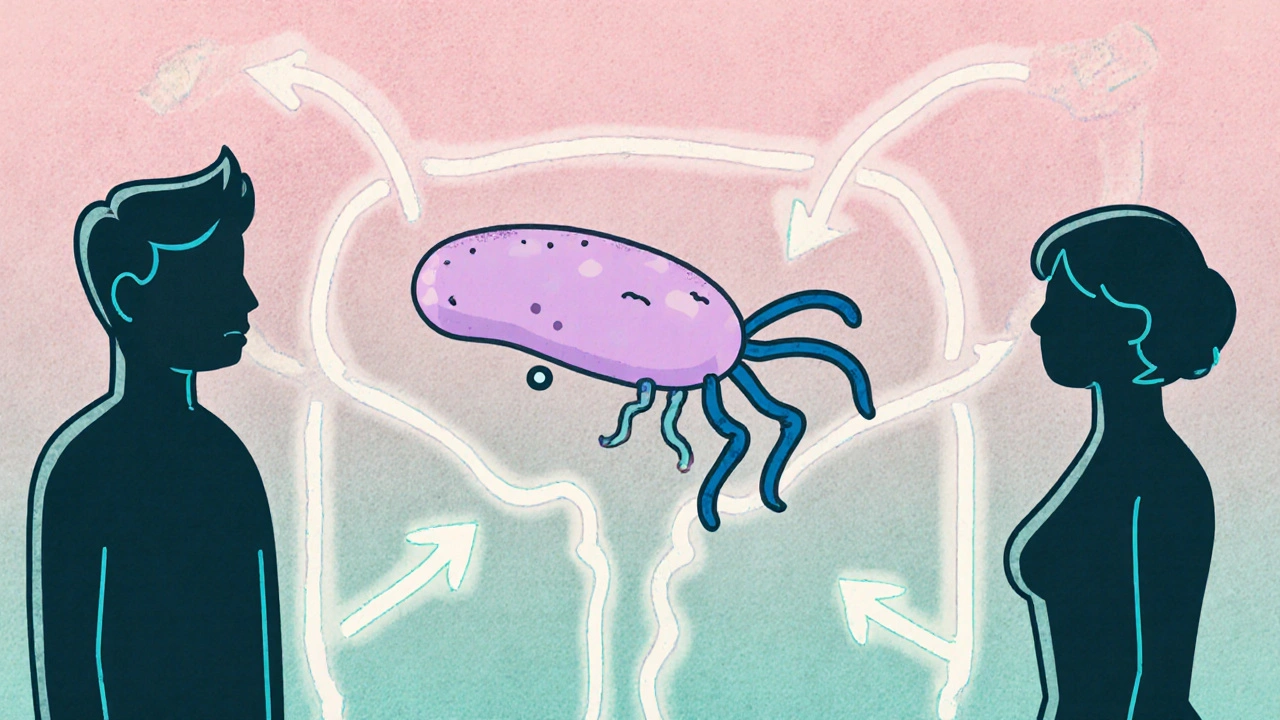Trichomoniasis Protection Calculator
Enter your prevention practices below to calculate your estimated protection level against Trichomoniasis.
When it comes to Trichomoniasis is a common sexually transmitted infection caused by the parasite Trichomonas vaginalis, many people underestimate the risk. In the United Kingdom, the latest Public Health England report estimates around 150,000 new cases each year, making it the most prevalent non‑viral STI. If you want to avoid trichomoniasis, follow these proven steps and protect your health.
Understanding Trichomoniasis
Trichomoniasis affects both men and women, but women are more likely to experience noticeable symptoms. The parasite thrives in the urogenital tract, spreading primarily through vaginal or penile‑to‑vaginal contact. According to the World Health Organization, untreated infections can increase the risk of HIV acquisition and cause complications during pregnancy, such as premature birth.
How It’s Transmitted
- Unprotected vaginal intercourse - the most common route.
- Oral‑genital contact - less frequent but possible.
- Sharing sex toys without proper cleaning.
Unlike bacterial STIs, Trichomoniasis does not survive long outside the body, so casual contact like touching towels or toilet seats poses minimal risk.
Who Is Most at Risk?
Risk factors include having multiple sexual partners, a history of other STIs, and inconsistent condom use. Young adults aged 15‑29 account for about 75% of new infections in Europe. Women who are pregnant or using hormonal contraceptives also show slightly higher susceptibility.
Typical Symptoms (and Why They Matter)
| Symptom | Common in | Possible Misdiagnosis |
|---|---|---|
| Vaginal discharge (frothy, green‑yellow) | Women | Bacterial vaginosis |
| Itching or irritation | Women | Yeast infection |
| Painful urination | Both sexes | UTI |
| Discomfort during sex | Both sexes | Other STIs |
| No symptoms | Up to 70% of men, 50% of women | Often unnoticed |
Because many infections are asymptomatic, routine testing is the only reliable way to catch the disease early.
Core Prevention Strategies
Below is a quick comparison of the most effective methods you can adopt today.
| Method | How It Works | Typical Reduction in Risk |
|---|---|---|
| Male & female condoms | Barrier that stops parasite transfer | ~70‑80% |
| Dental dams (for oral‑genital contact) | Protects mucous membranes during oral sex | ~60% |
| Monogamous relationship with a tested partner | Eliminates unknown exposure | ~85% |
| Regular STI screening (at least annually) | Early detection and treatment | Indirect - catches infections before spread |
| Proper cleaning of sex toys | Use soap and boiling water or a 70% alcohol wipe | ~90% when done consistently |
Combine two or more of these tactics for the best protection.

Condom Use - The First Line of Defense
Condoms are the only method proven to lower the risk of both viral and parasitic STIs. Make sure the condom is latex or polyurethane, as natural‑rubber latex provides the highest barrier integrity. Apply lubricant-preferably water‑based-to avoid breakage. Remember to check the expiration date and store condoms in a cool, dry place.
Regular STI Testing
Testing for Trichomoniasis is simple: a urine sample for men or a vaginal swab for women, analyzed by nucleic‑acid amplification tests (NAAT). Many UK clinics offer free testing for those under 25, and private labs provide results within 48 hours. Schedule a test at least once a year, or sooner after a new sexual encounter.
Partner Treatment and Communication
If you test positive, the standard therapy is Metronidazole (or Tinidazole), taken as a single dose of 2 g or a 7‑day course of 500 mg twice daily. Both you and your sexual partners need treatment to avoid reinfection. Open, non‑judgmental conversation about test results helps ensure everyone gets the medication promptly.
Special Situations: Pregnancy and Men Who Have Sex with Men (MSM)
Pregnant women with untreated Trichomoniasis have a higher chance of delivering preterm or low‑birth‑weight infants. Screening is recommended during the first prenatal visit and again in the third trimester if risk factors persist.
MSM may acquire the infection through receptive anal intercourse or oral‑genital contact. Using condoms and dental dams, coupled with regular rectal and urethral testing, reduces the likelihood dramatically.

Everyday Lifestyle Tips
- Stay hydrated - a healthy mucous membrane is less prone to infection.
- Avoid douching; it disrupts natural flora and can increase susceptibility.
- Wear breathable cotton underwear to keep the genital area dry.
- Limit alcohol and smoking, as they can impair immune response.
Debunking Common Myths
Myth: “If I don’t feel any symptoms, I’m fine.”
Fact: Up to 70% of infected men and 50% of infected women are asymptomatic. Testing is essential.
Myth: “A bath or swimming pool can give me Trichomoniasis.”
Fact: The parasite cannot survive outside the human body for long; water exposure is not a transmission route.
Quick Prevention Checklist
- Use condoms or dental dams every time.
- Get tested at least once a year.
- Ensure any sexual partner has been tested.
- Treat both you and your partner if positive.
- Practice good genital hygiene without douching.
- Discuss STI history openly with partners.
When to Seek Professional Help
If you notice unusual discharge, burning during urination, or pelvic pain, book an appointment promptly. Untreated Trichomoniasis can increase susceptibility to other infections and cause lasting discomfort.
Frequently Asked Questions
Can Trichomoniasis be cured completely?
Yes. A single dose or a short course of Metronidazole or Tinidazole clears the infection in most cases. Both you and any recent sexual partners must complete treatment to prevent reinfection.
Is there a vaccine for Trichomoniasis?
No vaccine exists yet. Prevention relies on safe‑sex practices, regular testing, and prompt treatment.
How quickly do symptoms appear after exposure?
Symptoms can emerge anywhere from a few days to several weeks after contact. Some people never develop noticeable signs.
Can I get Trichomoniasis from oral sex?
Oral‑genital contact can transmit the parasite, though the risk is lower than with vaginal intercourse. Using a dental dam eliminates this route.
Is Trichomoniasis linked to infertility?
Chronic infection can cause pelvic inflammatory disease, which may affect fertility. Early treatment reduces this risk.


Albert Fernàndez Chacón
Condoms work like a physical firewall for the parasite, so using a fresh latex or polyurethane barrier every time slashes the risk by roughly 70‑80%. Pair that with water‑based lubricant to avoid breakage, and you’ve got a solid first line of defense. Routine screening once a year catches silent infections before they spread, especially since many men and women show no symptoms at all.
Drew Waggoner
Reading about trichomoniasis makes me think about all the times I felt invisible in health conversations, like the topic never gets the gravity it deserves. It’s a reminder that staying informed isn’t just a checkbox-it’s a personal act of self‑preservation.
Alex Lineses
From a clinical standpoint, the NAAT is the gold standard for detection because it amplifies even tiny amounts of parasite DNA, giving you a reliable result in a couple of days. Combining barrier methods-male, female condoms, or dental dams-with regular testing creates a layered prevention model that’s both evidence‑based and user‑friendly. Remember to discuss partner treatment simultaneously to break the reinfection cycle; simultaneous therapy is key for eradication. Also, advise patients to avoid douching, as it can disrupt the vaginal microbiome and increase susceptibility.
Brian Van Horne
Indeed, adherence to prophylactic protocols constitutes a paramount stratagem against trichomonal transmission.